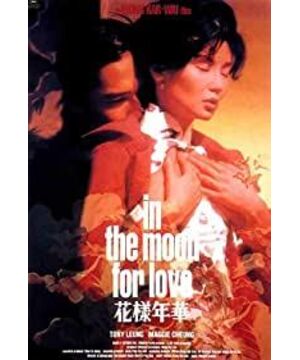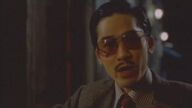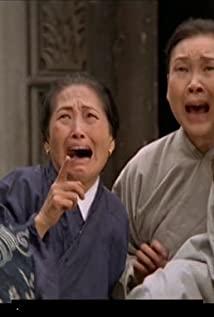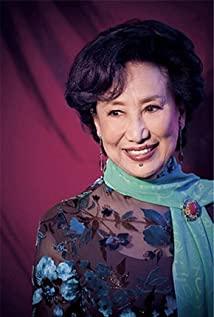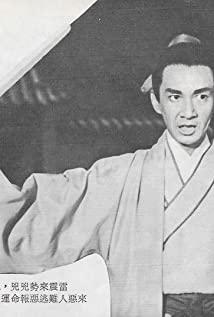1. The implicit beauty of the film’s theme.
Art is implicit, and film art also has this artistic rule. The implicit expression makes the artistic work richer, and makes the theme of the whole work more charming and memorable. "In the Mood for Love" has such artistic characteristics. Director Wong Kar-wai uses a metaphorical and symbolic expression technique to add an inner charm to the film. Just like a hazy poem, every word including every punctuation has its symbolic meaning, and it is also like a freehand painting, every line implies metaphor. The use of distinctive metaphors and symbolic expression techniques makes this work appear both implicit and deep in the expression of the theme. The film not only reflects the misfortune of Zhou Muyun and Su Lizhen because of their lover’s derailment, but also not only reflects the sincere feelings between them, but also reflects that era, that society, people’s general emotional life and moral concepts, etc. .
(1) The implicit expression of the theme of the film by the metaphorical expression technique.
An excellent film work, its theme is not directly told to the audience, but implicit in every detail, it depends on the audience to experience. In "In the Mood for Love", Wong Kar-wai uses metaphoric montage and repeated montage techniques to implicitly and naturally convey the theme of the film. While expressing the emotional changes of the heroes and heroines, it also hints at the real status quo of Hong Kong society in the 1960s, giving the film era color and color. The social significance enhances the artistic value of the film. For example, the film uses Su Lizhen to call Mrs. Ho (Boss Ho's wife) and Miss Yu (Boss Ho's lover) and buy gifts for Boss Ho, which shows that the boss is also going back and forth between lover and wife. Combining the whole plot, we can feel the real life and emotional status of the petty bourgeoisie in Hong Kong society in the 1960s. Not only was Su Lizhen's husband and Zhou Muyun's wife "out of the wall", many people were like them outside with lovers, and they were all secretively. In "In the Mood for Love", the director uses a series of metaphorical expression techniques to imply the emotions, characteristics of the times, and cultural connotations of the characters in the film in every detail. While deepening the theme, it can express There is implicit beauty on it.
Metaphor montage is an artistic technique in expressing montage. Metaphoric montage is “the montage that connects different images of shots, so as to produce analogies, symbols, and hints in the combination of shots.” [1] It can give people a vivid and intriguing feeling. In "In the Mood for Love", Wong Kar-wai has repeatedly used metaphoric montage to deal with the details of the film, which greatly enhanced the artistic appeal of the film and increased the implicit beauty of the film. For example, the scene of "the dim street lamp" appeared many times in the film, this street lamp seems to be Su Lizhen's lonely and lonely heart. Her husband is always away, and she is the only one who goes to the small noodle stall to eat every day. Just like street roads, etc., lonely. For another example, the appearance of empty shots of the "wall clock" in the film can easily make the audience feel the passage of time and the ruthlessness of the years, which is very metaphorical. There is also a shot of a tree that appeared in the film when Zhou Muyun left Hong Kong to go to Singapore. The director of this shot used the angle of looking up to shoot. The scene is composed of a blue sky and a tall small tree, explaining the scene. The transition from Hong Kong to Singapore and the time is the transition from 1962 to 1963. But more importantly, it implies that the feelings between Zhou Muyun and Su Lizhen are getting farther and farther, and the love between them has never been possible. The application of these metaphoric montage techniques in the details of "In the Mood for Love" adds to the subtle beauty of the theme of the film, mobilizes the audience's emotions and thoughts, and makes the audience feel the two married men and women living in Hong Kong in the 1960s. The feelings of helplessness and sadness of being in love but not being able to love each other.
In addition, in "In the Mood for Love", the protagonists Zhou Muyun and Su Lizhen repeatedly walk through narrow stairs, from home to small noodle stall and from small noodle stall to home. This scene appears repeatedly, ostensibly an expression of the protagonist's life. In fact, Wong Kar-wai uses "the montage technique of repeatedly reappearing the same content in the film to highlight and emphasize the symbolic meaning of the content" [2], that is, the repetitive montage technique. The reason why the director wanted to use this performance technique at the beginning of the story was to symbolize their lonely and deserted life by using them to constantly go up and down the stairs, in and out of the picture, for his wife and The extramarital affairs between her husband paved the way for it, and it also metaphors that there will be a story between the two of them. In this film, another clever use of repeated montages is that Zhou Muyun rented a house in a hotel in order to write a novel. When Su Lizhen went to the hotel to see him after learning about it, Su hurried up the stairs of the hotel and then hurried again. The footage of walking down the stairs of the hotel repeatedly appeared. Su Lizhen goes up and down, down and up again, and the repetition of the up and down scenes can easily make the audience feel the heroine's intense psychological struggle. Here is a metaphor for a contradiction. In essence, he has feelings for Zhou Muyun and wants to see him, but because he is a wife and is restrained by morals, he avoids being "like them." The repetitive effect here cleverly and appropriately shows the ambivalence of the characters, and also reflects the moral values of the society at that time. When the director conveyed these thoughts to the audience, he did not tell the audience straightforwardly, but hid all this in the continuous repetition of the picture, adding to the charm of the film.
(2) The hints of light and shade and color to the theme.
Although the light, shade and color of the film are not the main elements of the theme, they also have an important role to be ignored. Light and shade and color are given special meanings in "In the Mood for Love". The dim tones and the changing costume colors of the heroine play a certain role in the expression of the theme of the film.
In "In the Mood for Love", Wong Kar-wai made most of the pictures very dim. The use of such tones in the film implies the atmosphere of the times, the truth of life and the emotional themes in the story, creating a gloomy, low-pitched, depressed and sad mood. Atmosphere. The use of dark tone in "In the Mood for Love" creates a nostalgic and sentimental thought. In the film, the characters are placed in the dark stairs, corridors, dark rooms and dark streets...The gray effect of the picture casts a shadow of the times in the film, and it is easy to make people feel the social conditions of Hong Kong in the 1960s. Regrets with the feelings of the two protagonists in the film. It implied that Zhou Muyun and Su Lizhen couldn't break the "dust-covered glass", and they couldn't get past the moral constraints in their hearts after all. Moreover, the whole film is basically based on the dark tone of the background, making the theme appear heavy, deep, and depressing, bringing the audience's thoughts into a state of "sorrow", making people feel the "sorrowful" result of the film, making people feel I felt the truth of a love story that happened in Hong Kong in the 1960s.
In this film, the most expressive color is the cheongsam on the protagonist Su Lizhen. The continuous changes of the cheongsam on Su Lizhen indirectly reflect the development of the storyline and the changes in the mood of the characters. The director expresses the psychological changes of the heroine with the color changes of the cheongsam. The color of the cheongsam worn by the heroine in the entire film, such as when moving, when watching her husband play mahjong at Mrs. Sun’s house, when trying the rice cooker with Mrs. Sun and others, when asking her husband to bring a purse to her boss, or going to work at the company At times, or at other times, the cheongsam is usually matched with white and black, white and blue, and light yellow and white. The cheongsam with these colors is worn by Su Lizhen. These kinds of plain clothes are in harmony with the dark tones of the film and the surrounding environment. However, when Su Lizhen went to the small noodle stall to buy food several times in the film, she was dressed in a very dark cheongsam, suggesting her loneliness and inner loneliness; when they determined that their lover had an extramarital affair, Su Lizhen went to the hotel When I saw Zhou Muyun, she was wearing a red cheongsam. This was contrary to her usual style of dressing, and it was in stark contrast to the color of the clothes she had always liked. This is actually a metaphor for the love between them. Su Lizhen wore a yellow cheongsam while the landlord was not visiting Zhou Muyun's house, which symbolized their happiness and warmth together. When Su Lizhen decided to go with Zhou Muyun, her clothes turned green. Green is full of vitality and symbolizes life. This is a metaphor for Su Lizhen's determination to start a new life with Zhou Muyun. However, when it arrived at the hotel, Zhou Muyun had already left. The green that represents hope was set against the red curtains, red beds, and dark red walls, which made people feel a great loss. It represents "color is the lyrical symbol of film and television pictures, which can convey emotions and express the emotions that the artist wants to express" [3]. The ever-changing color of cheongsam on Su Lizhen not only reflects the subtle changes in the character's psychology, but also enhances the lyrical meaning of the film's theme.
The ever-changing color of cheongsam forms a sharp contrast with the dim picture tones. The color changes of cheongsam against the background of gray and dark tones are more expressive and the metaphorical effect is more obvious. Through the change of color, it is a metaphor for the change of the character's psychology and emotion, and it deepens the theme indirectly rather than directly. The dim tone of the picture sets off the theme. Makes the theme of the film more subtle and hazy.
(3) The symbolic meaning of props.
In this movie, there seems to be nothing superfluous. Every shot, picture, dialogue, music, and props have irreplaceable symbolic meaning in the movie. Wong Kar-wai has not let go of every detail's expressive effect on the subject. The cheongsam, embroidered slippers and other props in the film have both national characteristics and symbolic meaning. Not only adds a national flavor to the film, but also increases the implicitness of the theme.
Cheongsam is the most symbolic prop in "In the Mood for Love". Su Lizhen's beautiful cheongsam, which has been changed 27 times, implies a multi-layered symbolic meaning. In "In the Mood for Love", the director used the cheongsam as a metaphorical prop to convey the information of the story and the emotional changes of the characters to the audience invisibly, which played a role in shaping the artistic image. "Cheongsam is a traditional Chinese costume, symbolizing nobility and elegance" [4]. The heroines in the film all wear cheongsam. Director Wong Kar-wai takes such a noble and elegant costume as the only costume of the heroine, which can be described as ingenious. In the film, the cheongsam symbolizes Su Lizhen's noble personality. She has always said to herself and Zhou Muyun, "We will not be the same as them", showing her noble personality. Moreover, cheongsam is a traditional Chinese dress. In a certain sense, cheongsam is also a symbol of traditional thought in the film. It is precisely because of Su Lizhen's "noble" personality and the influence of traditional moral thinking that she cannot overcome herself and break through the shackles of morality to pursue her true love. This is the main reason why they have made their "wordless love".
A pair of embroidered slippers by Su Lizhen, which appeared four times in "In the Mood for Love", has important symbolic significance in the film. When the landlord suddenly returned, Su Lizhen was accused of being in Zhou Muyun's house. To avoid suspicion, she wore Zhou's wife's leather shoes and pretended that she had just returned home from work, so she left his embroidered slippers at Zhou Muyun's house. Zhou Muyun has always treasured these embroidered slippers, even when he left Hong Kong to Singapore, he also took them with him. This gives this pair of embroidered shoes a special meaning. It symbolizes Zhou Muyun's pure and sincere love for Su Lizhen, and is a symbol of the beautiful love between the two. Later, Su Lizhen went to Zhou Muyun’s residence in Singapore. She did not see Zhou Muyun. She stayed silently in Zhou’s room for a while and then left. Before she left, she quietly took the pair of embroidered slippers... The helplessness of the fruitless love between myself and Zhou. Zhou Muyun turned around in the house, but never found the pair of embroidered slippers again, it disappeared forever. The disappearance of embroidered slippers is a symbol that the love between them will never bear fruit.
2. The conciseness of the narrative form strengthens the theme.
"Movies are inherently a narrative of a story, or a movie exists because of narrative" [5]. Like a movie, characters and plots are essential and important elements of a movie. Under normal circumstances, the tortuous storyline and rich characters attract the audience the most. In "In the Mood for Love", Wong Kar-wai narrates the story with a highly simplified plot, highly omitted characters, and extremely refined character dialogue. The style is a bit like the narrative characteristics of the French New Wave movies that downplay the plot and the character's personality. The effect of this narrative form is that the whole film is concise and concise, and plays a role in highlighting the theme. It makes people feel that there is no superfluous element in the narrative process of the film, and every detail has a close relationship with the theme.
(1) A highly simplified plot.
The plot of "In the Mood for Love" is very simple, with no ups and downs from beginning to end. The high degree of simplification of the plot in the film makes the whole film look neat and clean from beginning to end, without redundancy. Such as the transition from renting a house to Su Lizhen and Zhou Muyun to their moving. The moving house appeared immediately after the renting scene, without any other plot in the middle. And when Zhou Muyun was looking for a house to rent, Mrs. Sun told him "I'm so sorry, the house has been rented to the lady just now" and told him that there was a room next door for him to see, and then there was a picture of the two moving. The transition between scene and scene is extremely concise and close. Although such a quick transition may sometimes bring a certain degree of difficulty to the audience's understanding of the plot, it feels sudden and inexplicable. But if you take a closer look, you will find that this transition has a very significant effect on the theme of the film, and it can effectively strengthen and highlight the theme. Like Chinese Tang poetry and Song Ci, the language is concise but the artistic conception is profound. In "In the Mood for Love", Wang Jiawei simplified the "how to start" of Zhou Muyun's wife and Su Lizhen's husband, and highly simplified the plot and content other than the main line. All plots and shots are closely centered on the emotional changes of the heroes and heroines, and go straight to the theme. In the film, Zhou Muyun found out that his wife had an extramarital affair with Su Lizhen's husband, and Su Lizhen also noticed that her husband had an extramarital affair with Zhou Muyun's wife. Both were psychologically uncomfortable and reluctant to face the facts. At this time, the scene of the film suddenly switched from the apartment to the cafe, and the scene of the hero and heroine in the cafe suddenly appeared. They want to know "how did they start" in the cafe? Immediately afterwards, the picture shifted to a long narrow street. How did the two simulate the relationship between Zhou's wife and Su Fu, and who took the initiative first? From the apartment to the cafe to the simulated scene of the two on the street, the plot is very jumpy. Another example is Zhou Muyun writing a novel in the guest room of a hotel, Su Lizhen went to see him, and just after the screen of Su Lizhen going upstairs, there was a picture of the two saying goodbye at the door, omitting the content after Su Lizhen entered the room. The whole film has omitted some transitional plots, and only retained the main plot that can best express the theme, which strongly highlights the theme. This simplification of the plot creates a gap between the plot and the plot, and it also leaves an infinite imagination space for people to constantly recall the thoughts and intentions of the film.
Moreover, this simplification of the plot has invisibly strengthened the expressiveness of the erratic, complex, subtle, and elusive inner mood changes of the characters in the film, making the film possess a strong lyrical nature. In the film, every shot, every picture and every detail, including music, color, etc., can express the expression of emotion, showing the complex, contradictory, and subtle changes in the character's psychology. Zhou Muyun met Su Lizhen on a dark and quiet street one night before leaving. Zhou said, "I know you won't leave your husband." Su Lizhen fell on Zhou's shoulder and wept. Then they left in the car. In the scene, Su said in the car, "I don't want to go home tonight," without explaining where they are going or what they are doing. What only appeared next was a shot of a wall clock, outside the painting was Zhou Muyun's voice, "It's me, if I have an extra ticket, will you go with me?". Then what appeared was Zhou and Su in different places, listening to Su’s husband’s "In the Mood for Love" which Su Lizhen ordered on the radio with a sad expression. This series of plots quickly change, and it is very intuitive to portray the complex psychology and subtle change process of the hero and heroine's inner regret, helplessness, sadness, and loss. Ignore the minor and grasp the main, highlight the emotional change process of the heroes and heroines, increase the expressiveness of the film, and enable the audience to grasp the main theme of the film.
(2) Highly omitted characters.
In "In the Mood for Love", in addition to the simplification of the plot, there is also the omission of the characters. In the whole film, apart from the hero and heroine, there are several characters closely related to the theme, and there are almost no other casual characters. Even Zhou Muyun's wife and Su Lizhen's husband did not actually show up, only showing back and voice several times. Some people call Wong Kar-wai's technique "absence of characters". In fact, in terms of the characters appearing in the entire film, "the omission of characters" should be more appropriate. As far as the whole movie is concerned, there are only ten characters who can see clearly and have lines, including porters who have only one-sent lines, and the Singaporean landlord. Even the landlord Mrs. Gu only appeared once, with only one line. . In the house of the landlord, Mrs. Sun, only Mrs. Sun and the servant appeared. The other people in Mrs. Sun's and Mrs. Sun's house did not appear at all. It's not that Mrs. Sun is the only one in Mrs. Sun's family. You can tell from the sentence "Mother Wang, let's have dinner, third brother, they are all hungry." In addition, Boss He’s lover and wife, Mr. Gu’s family, other colleagues from the newspaper where Zhou Muyun works, and other colleagues from the company where Su Lizhen works are also omitted from the film. The director's design of so many characters that did not appear is not just the "absence" of the characters. In fact, it should be the omission of the characters.
This way of omitting a large number of characters has enhanced the protagonist’s image shaping and the development of inner emotions, making the development of the story closely centered on Zhou and Su, and undoubtedly played a huge role in highlighting the psychological changes between the protagonists. , Which strengthens the theme of the film.
(3) Highly concise character language.
Dialogue is the most important element in the sound of a movie, "it helps to understand the character and mood of the characters, and provides clues to the development of the event" [6]. The lines of the characters in "In the Mood for Love" are very concise, and the dialogues of the characters often consist of a short sentence or even a few words. For example, when Zhou Muyun and He Su Lizhen saw the last time they left in a taxi, the film only showed Su Lizhen's words "I don't want to go home tonight." Zhou Muyun called Su Lizhen when he was about to go to Singapore, and only used the sentence "It's me, if there is an extra ticket, will you go with me?" to express his inner desire to be with Su Lizhen. After Zhou Muyun’s words, there were the hotel room where Zhou Muyun lived and the plot of Zhou standing in front of the window waiting in agony, and then leaving quietly, followed by the scene of Su Lizhen hurriedly descending the stairs, and the scene of sitting silently on the bed, for a long time. After time, there was a sentence "It's me, if there is an extra ticket, would you take me with you?" From Zhou Muyun's words to Su Lizhen's words, there was no other character dialogue, only Background music. The two short sentences made the audience feel that one of them was making a painful decision, and the other was waiting in a painful psychological state. For another example, when Zhou Muyun's wife called Su Lizhen's husband, she only had two short sentences "Did you tell your wife? Don't call me anymore." And there was no voice from Su Lizhen's husband. These two simple sentences vividly show the character mood of the two extramarital lovers. Concise and concise character language is a feature of this film. Sometimes a few words and sentences can express what the film wants to express appropriately. Although there are few words, the sentences are very meaningful. Make the whole film full of lyrical meaning.
The film uses highly omitted artistic techniques to simplify the plot, simplify the language, and omit the characters, leaving a lot of imagination space for the audience. Take miscellaneous things and leave the essence to make the theme more prominent and vivid.
3. The smooth and balanced rhythm makes the theme of the film more lyrical.
"The movie is not only a machine that is good at telling stories, but also a color pen that expresses emotions and aspirations." [7] Although the transition of the plot of "In the Mood for Love" is very simple, the whole film appears to be very balanced in the narrative rhythm. The film has a strong lyrical meaning. The audience is like sitting on a uniform and gentle train, watching the beautiful scenery all the way, a series of feelings and thoughts aroused during the viewing process. From the male protagonist and the female protagonist moving into the same apartment to the extramarital affair between his wife and her husband to their relationship and then to the male protagonist’s departure, this series of plot advances are all at the same rhythm, from There is no ups and downs from beginning to end. It is precisely because of this gentle narrative rhythm that the film has sufficient time to portray details, better express the protagonist's rich and complex psychology, and increase the film's lyrical nature. At the same time, it leaves time for the audience to imagine and think.
The coordination of the characters' movements and the theme music in the film is perfect. Under the soothing three-time rhythm of the theme music, Su Lizhen walks alone carrying a lunch box when going out to buy food, Zhou Muyun's facial movements when eating chaos at a stall, sitting in the office smoking while writing, etc., whenever the theme music When it sounded, the movements of the characters moved slowly with the three-time rhythm of the music "Pap-Da-Da", as graceful and in harmony as a dancer dancing in the music, intoxicating. Wong Kar-wai uses slow motion to perfectly combine the action of the characters with the theme music of the movie, and the action is completely consistent with the rhythm of the music. It strongly expresses the inner world of the characters. Listening to the theme music and watching Su Lizhen walking slowly in the dark and narrow corridor, we can't help but feel the loneliness and depression in her heart. Seeing Zhou Muyun's series of actions silently leaving the hotel room, we all deeply felt the pain and helplessness in his heart. There is also a slow motion of the two writing novels together in a hotel room, and it is also presented in a soothing rhythm under the melody of the theme music, showing the nostalgic and beautiful time spent together by the two. The director filmed these actions in slow motion to match the melody of the music, with a strong sense of soothing rhythm. Increase the lyricism and artistic appeal of the film. Under the gentle rhythm, we felt the emotional thoughts that the film wanted to express, and felt the love process of the two from being lonely to falling in love and then leaving. It is not clear whether it is right or wrong.
"In the Mood for Love" has shaped a novel, refined, rich, and implicit theme from a new perspective. It shows "that era", shows the contradiction between morality and emotion, shows the conflict between colonial culture and traditional culture in the 1960s, and shows the complexity and subtlety of human nature. The love story of Zhou and Su who want to "love" but not "love" makes people feel the complicated relationship between human nature, society, and morality, giving people a touch of regret and helplessness. Wong Kar-wai did not position the content of the film only on the love of men and women, but used a series of unique expression methods to add the color of the times, the national color and the connotation of human nature. This is exactly the success of this film.
Note
① From the narration at the end of the movie, "Those lost years are like a piece of dust-laden glass that can be seen and cannot be grasped. He has been thinking about everything in the past, if he can break through that piece of dust-laden glass. Glass, he will go back to the long gone years." Zhou Muyun and Su Lizhen's feelings seem to be close at hand, but they are far apart. The beautiful love between them can only be turned into an eternal memory.
②In "In the Mood for Love", when Su Lizhen went to see Zhou Muyun in a hotel, she said "We will not be like them" before leaving. Reasonable restraint and moral restraint made her constantly suppress her inner passions.
[References]
[1] Li Biaojing. Film Art Appreciation [M]. Hangzhou: Zhejiang University Press, 2005: P86, P64.
[2] Ni Xiangbao. Introduction to Film and Television Art [M]. Suzhou: Suzhou University Press, 2002: P346.
[3] Hu 嫔. On the national spirit of the aesthetic modeling of cheongsam [J]. Art and Design, 2003 (119).
[4] Song Jialing. Film and Television Narrative[M]. Beijing: Communication University of China Press, 2007: P3.
[5] Xiao Xia. Complex metaphors [J]. Film Review, 2006 (15).
[6] Jin Danyuan. Introduction to Film Aesthetics [M]. Shanghai: Shanghai University Press, 2005: P68.
[7] Jia Leilei. The dissemination of images [M]. Guilin: Guangxi Normal University Press, 2005: P158.
View more about In the Mood for Love reviews


